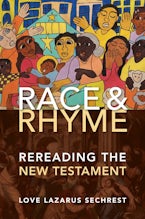- Home
- religion
- literary criticism
- The Power of Pictures in Christian Thought

The Power of Pictures in Christian Thought
The Use and Abuse of Images in the Bible and Theology
272 Pages
- Paperback
- ISBN: 9780281078868
- Published By: Society for Promoting Christian Knowledge
- Published: October 2018
$39.30
For a long time, we have been indebted to Anthony Thiselton for his writings in the fields of hermeneutics and biblical criticism, and this new volume, The Power of Pictures in Christian Thought, adds another distinguished chapter to his work. Though deeply learned and demanding of close attention, this book is clearly intended primarily for teachers and preachers, as its concluding pages focus on homiletics and the scriptural examples of Jesus and Paul and how “Jesus preached and taught in order to grant us a vision and understanding of God” (223).
Part 1, entitled “Philosophical, Hermeneutical and Literary,” provides a thorough and necessary background to the biblical material discussed in part 2. A book that is self-confessedly written from the heart also requires careful intellectual structures, and these are provided in a historical review of visual representation as understood in philosophy from Plato to the present, focusing finally and most importantly on Ludwig Wittgenstein. Careful analysis of pictures, symbols, and archetypes is given through attention to the work of Carl Jung, Paul Tillich, and Paul Ricoeur, among others. Chapter 2 addresses the dangerous seductive potential of pictures, and chapter 3 provides a fine introduction to the nature of metaphor and symbol, drawing once again on the thinking of Ricoeur, together with Friedrich Nietzsche and Jacques Derrida. Part 1 concludes with a discussion of hermeneutics, interpretation, and interpretative frames, and prepares the reader for an extended discussion of biblical pictures, symbols, and images in both the Old and New Testaments. Part 2 is the heart of the book, but it will only be fully appreciated after a close reading of the previous section.
A brief review can do little credit to the riches offered in these scriptural discussions. Following a short but dense reflection on visual symbols and images in the Old Testament, Thiselton turns at much greater length to the teaching of Jesus in the gospels and Paul in the epistles. We are sent back first to the parables of Jesus, their images and “cognitive truth-claims” (93). In a review of the history of the interpretation of the parables, Thiselton demonstrates how their narrative pictures and visual images can be seductive and profoundly misinterpreted by readings that are too rigid or doctrinaire.
We move on from the teaching of Jesus to the teaching of Paul, whose pictures and analogies reflect an urban context, rather than the predominantly rural life of Jesus. Thiselton presents the Pauline images through the history of interpretation from Clement of Alexandria to the present day. Drawing upon the Pauline corpus from the earliest writings to the pastoral epistles, these interpretations show Paul deeply contextualized in the daily life of his time, from the Isthmian Games in Corinth to the imperial processions of the Roman Empire. Careful readings of Paul’s analogies, metaphors, and mental pictures are essential to an accurate understanding of his thought.
And then there is the book of Revelation explored in chapter 9. Thiselton links his reading of the text with its realizations in the history of art and film, being careful not to decode the images of the Apocalypse and thereby reducing them to readings of a “crude literalism” (184). The final part of the book provides suggestive excursions into images and symbols in postbiblical sources, beginning with the church fathers and gnostic writings. The medieval period from 1000 to 1500 is presented through the writings of twelve mystics and their visions, from Bernard of Clairvaux to St. John of the Cross, whose powerful images again have the capacity to be “seductive and misleading” (214).
As the book concludes with the church today, we are reminded again of both the power and the danger of images and visual communication, and that is precisely why Thiselton has been so careful to instruct his reader in the philosophy and interpretation of images. This is a scholarly work, as one would expect of its author, valuable for students, teachers and preachers.
David Jasper is Emeritus Professor at the University of Glasgow, Scotland.
David JasperDate Of Review:October 31, 2020
Anthony C. Thiselton is Emeritus Professor of Christian Theology at the University of Nottingham.











